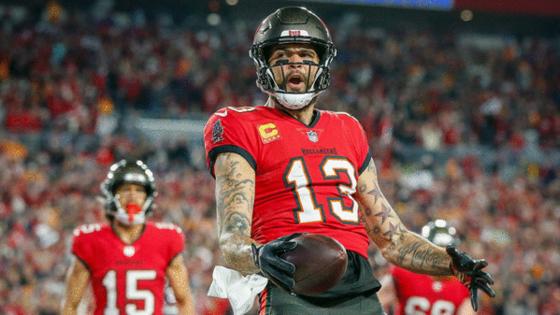John Romano: Bucs have some deep thoughts about their vertical passing game
Published in Football
TAMPA, Fla. — This is a story about evolution.
A winding tale of personalities and philosophies. Growth and regression. It spans seasons, coaches, quarterbacks and departures. At times, it feels epic and occasionally dramatic.
Or, if you prefer the short version, it’s about rediscovering your inner biscuit.
You remember the biscuit, right? Former Bucs coach Bruce Arians famously preached the “no risk it, no biscuit” gospel when he arrived in Tampa Bay and installed an offense that relied heavily on a downfield passing attack.
Beginning in 2019, the Bucs were throwing the ball as deep as any team in the NFL. They led the league in downfield passes (20 yards or more) in Tom Brady’s first two seasons, were second in Jameis Winston’s final season and second again in Baker Mayfield’s first season.
For five years, their starting quarterback averaged 94 pass attempts a season beyond 20 yards.
And then, last year, Mayfield attempted only 52.
What happened?
The simplest explanation is that Liam Coen, last season’s offensive coordinator, favored a ball-control passing attack coupled with a strong running game. Nothing wrong with that. Tampa Bay averaged 29.5 points per game in 2024, which was the third-best total in franchise history, and Mayfield threw a career-high 41 touchdown passes.
But Coen is a head coach in Jacksonville now, and Josh Grizzard is Tampa Bay’s latest rookie offensive coordinator.
And guess who sounds like a biscuit guy?
“It’s something we stressed in the offseason from the time they got here in April through the plays we were running in the spring to try to push the ball down the field a little bit more,” Grizzard said. “We did a bunch of it in the spring, done a good amount of it so far (in training camp). It’s a great challenge with all the blitzes trying to hold up in protection and be in the right protection to be able to get that off, be able to get that throw down the field.
“It’s something we’re stressing and will continue to stress.”
It’s not likely that the Bucs will immediately jump back to the top of the league in downfield attempts, particularly with left tackle Tristan Wirfs still recovering from knee surgery. But if they can make defensive backs worry more about the possibility of a ball being thrown over their head, it could potentially open things up for the rest of the offense.
Or, as Bucs senior offensive assistant Tom Moore says, defenses won’t worry about passes you don’t throw.
“If you have a certain pattern and stick to your pattern, the defense has to be prepared for you to make that throw,” Moore said. “So now, defensive backs are dispersed all around the field, and it’s much easier for the quarterback to find the open receiver.”
It’s no exaggeration to say few receivers can match Mike Evans as a deep threat. Among players with at least 500 receptions, only DeSean Jackson and T.Y. Hilton had a higher yards-per-reception rate than Evans (15.2 yards) in the past decade.
Last season, however, Evans dropped to 13.6 yards per catch, the lowest average in his 11 seasons in Tampa Bay.
Maybe injuries had a little to do with that. Maybe age, too. But, more than likely, it was the offensive system that favored high-percentage passes.
“That was just (Coen’s) system. It wasn’t a vertical passing game like B.A.’s ‘no risk it, no biscuit,’” said quarterbacks coach Thaddeus Lewis. “When we were very good in the passing game vertically, it was because we practiced it a bunch. Last year, we were very good in the running game because we practiced that a bunch. You get results on what you emphasize. I think Grizz wants a little balance between the (running game), the play action and the vertical pass.
“You want to make the defense honest. They can’t sit at the sticks, they can’t sit on routes. If there’s a threat that a receiver is going to run by you, then everything underneath starts to open up. It’s just playing that chess game with the defense.”
While fans tend to focus on the “biscuit” angle, there is a “risk it” quality to throwing the deep ball.
Mayfield was tied for the NFL lead in interceptions last season with 16 and, not surprisingly, his percentage of errant throws was higher downfield. Mayfield’s interception rate was 7.8% on deep passes compared to 2.4% on every other pass.
While not specifically addressing deep passes, Mayfield said his goal is to cut down on turnovers by making better decisions. Physical mistakes happen, he said, but knowing when to be aggressive and when to throw underneath is part of the growing process.
“We know what we could be good at, so we are still trying to improve on it, but it is training camp,” Mayfield said. “You are still trying to figure out what type of team you are going to be.”
Does that mean the Bucs are willing to start risking it again in 2025?
Considering all the factors — Wirfs’ injury, the successful running attack, Chris Godwin’s return from a dislocated ankle — it may be pushing it to expect 90-100 deep passes like the old days.
But they do want to keep defenses from overplaying the run and shutting down the short passing attack.
Even if it’s not a featured part of the offense, you can probably count on the biscuit returning to the menu.
____
©2025 Tampa Bay Times. Visit tampabay.com. Distributed by Tribune Content Agency, LLC.







Comments